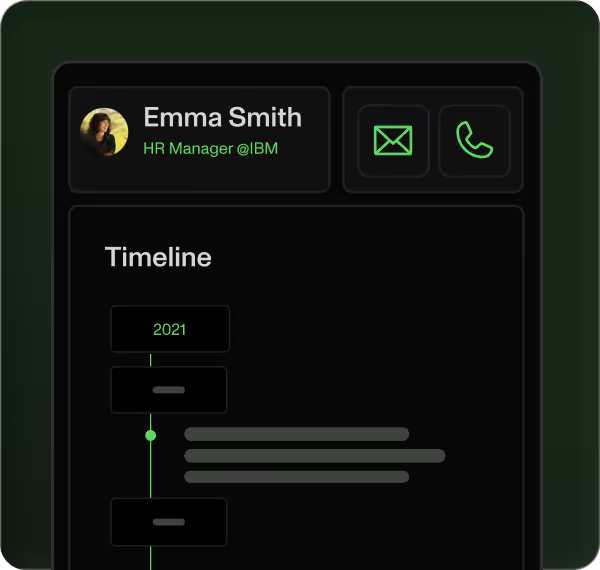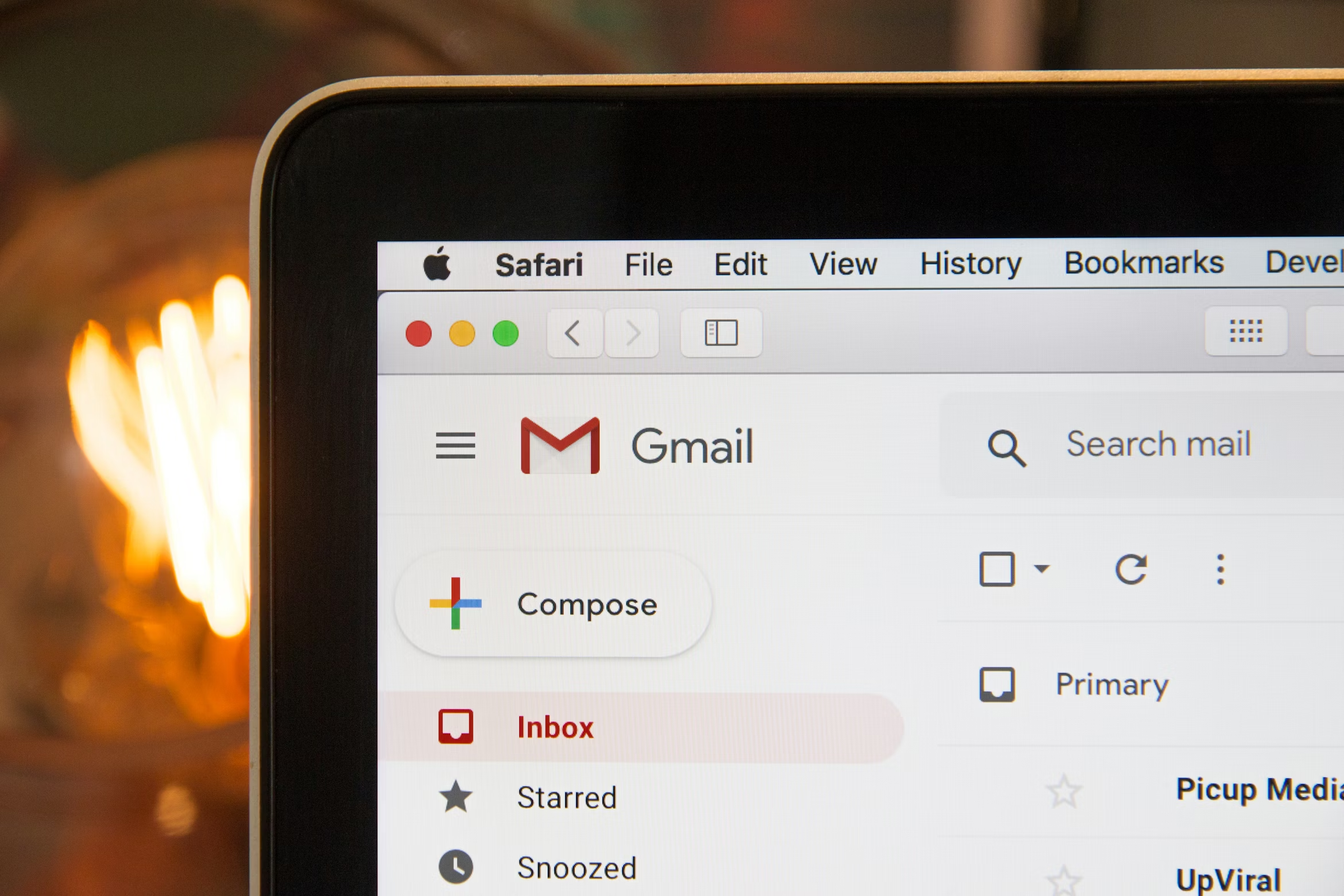Cold calling isn’t dead. It’s just evolved. When everyone’s hiding behind emails, DMs, and vague “just following up” messages, picking up the phone can still make you stand out, if you know how to use it.
But here’s the truth: most sales reps don’t.
They freeze when objections hit. Or worse, they sound like everyone else. That’s not a strategy, that’s a missed opportunity.
This guide gives you the full picture.
- Cold call scripts for different scenarios,
- Tips to pre-warm outreach,
- Insights on coaching, tracking KPIs, and scaling what works,
- Plus: how to use ZELIQ to centralize your cold call workflow and automate what used to take hours.
Whether you’re building your first script or managing a growing team, this playbook helps you turn more conversations into real pipeline.Let’s make your next call count.
What Is a Cold Call?
A cold call is simple. You’re reaching out to someone who wasn’t expecting your call. No email before. No intro from a mutual connection. No, “saw your post on LinkedIn.” Just you, their number, and a shot.
It’s a real-time attempt to start a conversation. There’s no context to lean on: you create the context. If done right, it feels like the beginning of something useful, not a disruption, for your prospects.
A cold call is completely different from inbound leads or nurture sequences. In cold calls, you’re not responding: you’re earning attention from scratch.
%3Aformat(webp).webp)
Let’s not confuse the terms. Cold calling is just one type of sales call.
Here’s how it compares:
3 types of sales calls
Not every sales call is a cold call.
- Cold calls are the very first point of contact.The person doesn’t know who you are. You’re hoping to learn something about them and earn the right to go further.
Example: You call the VP of Ops at a company that fits your ICP.
They’ve never clicked a link, replied to an email, or seen your brand.
- Warm calls have some context. Maybe they attended a webinar, opened a nurture email, or accepted your connection request. They’ve seen your name before.
Example:You message a sales manager who downloaded your pricing guide last week.
- Follow-up calls are about reactivation. You’ve spoken before. They saw a demo or showed interest. You’re circling back to re-engage.
Example: You call a CMO who ghosted after a great intro call two weeks ago.
This is persistence.
Each type has its place. The real mistake is using the same tone and structure for all three.
Common myths about cold calling
Cold calling’s been declared dead countless times. But that belief is based on outdated assumptions.
- “Cold calling doesn’t work anymore” When done well, it still converts. Recent data shows average success rates are around 4.8%. The phone still works, especially when combined with smart sequencing.
- “You have to be naturally persuasive.” Top performers don’t rely on charm: they rely on preparation. They know their script, their objections, and their personas.
- “Buyers hate cold calls” Only when they’re bad. No one likes generic, pushy calls. But a call that respects their time, gets to the point, and adds value? That’s rare enough to be welcomed.
When a message feels tailored and respectful, even unexpected outreach can feel welcome. What your prospects really hate is being treated like a number.
Why cold calling still matters in modern sales
Email. Slack. Retargeting ads. LinkedIn automation. There’s more noise than ever.
Very few are speaking directly. That’s where cold calling wins, because voice cuts through. It’s real and human. It forces attention in a way the other channels can’t. You can ignore an email. You can’t “un-hear” a voice.
It builds trust faster. We instinctively evaluate people by tone, pacing, and presence. A single cold call can build more credibility than five emails, because it shows you’re willing to show up.
More than that: it still works where automation doesn’t.Some industries still run on phone calls:
- Small and medium-sized businesses that don’t live on LinkedIn
- Construction and logistics roles, often in the field
- Ops or finance leaders who want clarity, not copywriting
Cold calling hasn’t disappeared, but nowadays, success in cold calling isn’t about dialing more: it’s about dialing smarter. Teams win when they call the right people, at the right moment, with relevant, personalized messages.
That requires data, research, and a mindset shift from quantity to quality. For the broader outreach motion beyond the phone, you can lean on an ultimate guide of sales prospecting to connect your calls with email, social, and intent-based plays. And here’s the game-changer: AI and automation are changing the game. Tools now help reps identify high-potential prospects, optimize call timing, and even offer real-time coaching during conversations.
What is the purpose of a cold call?
A cold call isn’t about pitching your entire product in under two minutes. The real goal is to open a door.
Your first objective is simple: start a conversation. If it leads somewhere, great. If not, you’ve planted a seed.
From there, you qualify:
- Does this person fit your ICP?
- Are they dealing with a pain your solution solves?
- Are they the right role, or can they introduce you to the one who is?
The best cold calls feel like the start of something useful. Not the middle of a funnel. Not the end of a pitch.
A simple framework for qualifying a prospect helps reps stay consistent on these questions so they don’t waste cycles on low-fit conversations.
The psychology of interruption
You’re interrupting someone’s day. They didn’t ask for this. The tension is real, but it’s also manageable.
Your tone, your pace, your ability to sound like a person. That’s what changes the equation.
One concept that helps is the “Pattern Jnterrupt”. It’s when you say something that makes the listener pause, because it’s different or honest. For example: “I know I’m calling out of the blue. Would 30 seconds be okay?”
%3Aformat(webp).webp)
That shift in tone breaks their mental script. They expected pressure. You gave them respect.
Tone triggers trust. The interruption doesn’t disappear. But done right, it becomes a gateway, not a wall.
Real-time human interaction: your competitive advantage
Most channels today are async. Emails. DMs. LinkedIn comments. You send something, then wait.
With cold calling, you get instant feedback. And you can adapt on the spot: if the tone shifts, you hear it live. No checking open rates. Just real dialogue.
And for the prospect, that can lower the stakes. It’s just a call. It’s less committal than clicking a “Book a Demo” button, and often feels safer too.
Used well, cold calling isn’t just a channel. It’s an advantage that most reps have stopped using… which makes it even more powerful for those who still do.
Reducing emotional friction with a good script
Cold calling isn’t just hard because of rejection. It’s hard because of the uncertainty.
What will they say? Will I freeze? That’s “emotional friction”.
A good script lowers that.
- For the rep, it’s a map. You’ve practiced your value prop. You’ve got responses for the classic objections. You’re not guessing: you’re executing.
- For the buyer, it’s clarity. No awkward silence. Just a respectful conversation that sounds like it has a purpose.
The best scripts don’t feel scripted at all. They feel natural because they’ve been tested, refined, and practiced until they flow.
If you want more practical examples, you can borrow proven cold calling techniques and adapt them to your own scripts so they stay sharp but still sound human.
%3Aformat(webp).webp)
How to prepare for a successful cold call
If you’re designing your outreach from scratch, start by mapping a simple prospecting plan so every call sits inside a clear sequence rather than feeling like a one-off effort.
Step 1: Research your prospect
A cold call deserves the same level of preparation as an in-person meeting.
Gather all the information you can about the company: its size, its industry, and its latest news: are they scaling, hiring, fundraising? A quick search on LinkedIn or Crunchbase usually tells you more than enough.
Then focus on the individual : what’s their job title? What do they actually do day to day? Job descriptions and recent posts often give you hints.
Now look for friction. What pain points are they likely dealing with? A Head of Sales on a five-person team isn't losing sleep over the same things as a CRO leading 200 people. The quality of that prep depends on the depth of your B2B database, so your reps always call with accurate company info, direct dials, and up-to-date roles.
Step 2: Leverage the right tools
You don’t need to prep cold calls manually anymore. Smart reps rely on tools that cut busywork.
Think in categories:
- Prospecting tools help you build and segment your target lists.
- Enrichment tools give you verified contact details, job roles, LinkedIn profiles.
- Intent data tools show signs that someone might be ready to buy.
- Lead scoring systems tell you who’s most likely to respond.
No need to use five different tools when one can do the job. ZELIQ, for example, brings multiple features into one interface: you can build your prospect list, enrich each contact with verified info, and score leads based on how well they match your ICP.
It’s cold calling, upgraded.
%3Aformat(webp).webp)
Step 3: Define your goal
Your goal should be focused and realistic.
- Are you qualifying?
- Trying to book a meeting?
- Looking to get a quick intro to someone else?
Define what a “successful call” means for your team. Maybe it’s a confirmed next step. Maybe it’s uncovering a pain point you didn’t know existed.
Step 4: Get in the right mindset
The mindset really matters. Don’t treat this like a pitch: it’s a conversation. You’ve done your research. Your tools are loaded and your script is ready.You’re not just there to talk, you’re there to listen and learn.
Expect rejection: it’s part of the process. Practice objection handling. You don’t have to be fearless. Just prepared enough that fear doesn’t run the call.
%3Aformat(webp).webp)
The anatomy of an effective cold call script
Opener: Set the tone in seconds
The first few seconds decide everything. If you sound robotic or rushed, it’s over.
If you sound like a human who respects their time? You earn the right to continue.
Some reps use permission-based openers:
Hey, did I catch you at a bad time?
It works because it gives control. The prospect doesn’t feel cornered: they’re choosing whether or not to engage.
Others go for honesty:
This is a cold call. Can I take 30 seconds to tell you why I reached out?
It works because it disarms people. You’re not pretending this is something it’s not. You’re clear, confident, and respectful.
Some go direct:
Hi Alex, this is Jamie from ZELIQ. We haven’t spoken before.
No tricks. Just a straight intro that gets you into the conversation quickly.
You can also try a quick pattern interrupt:
Don’t worry, I’ll be brief. Just one quick reason for the call.
It breaks the script in their head: they’re expecting a pitch, and you give them something low-pressure instead.
There’s no single perfect opener. What matters is how natural it sounds, and how well it matches your persona. A VP of Sales might appreciate directness. A mid-level Ops Manager might respond better to a softer, more curious tone.
Introduction: Establish credibility fast
You’re in: be clear, calm, and credible.
I’m Jamie, I lead sales at ZELIQ. We help teams automate and personalize
outbound at scale.
No pitch. Add a relevance cue if you can. Something like:
We work with other SaaS teams like [Company Name] who had similar outbound goals.
Discovery questions
Too many reps talk too much. Instead, ask.
“How are you currently handling prospecting across channels?” “Is your team mostly inbound or outbound focused right now?” “What’s the biggest blocker when it comes to booking meetings?”
These questions are part of every good sales call template.
The goal here isn’t to interrogate. It’s to surface a pain point.
Value proposition: pitch with precision
Once you hear something interesting: a blocker or a pain point, that’s your window to add value.
Your pitch should be short. No more than 30 seconds. It should follow this simple flow:
%3Aformat(webp).webp)
For example: “We help SDRs who are stuck using five different tools manage everything from one platform. That usually saves 3–4 hours per rep, per week.”
%3Aformat(webp).webp)
That’s value, and it speaks to what they care about.
Remember: a good script lets you deliver this kind of pitch with clarity and confidence.
The ask: make the next step clear
“Would it make sense to schedule a quick 15-minute call so I can show you how it works?”
%3Aformat(webp).webp)
It doesn’t ask for commitment. It asks for curiosity.
Offer times:
"I’m free Thursday afternoon or Friday morning: what works better for you?"
Make sure the ask fits the moment.
- If they’re cold and unsure, propose a short intro.
- If they’re engaged and interested, go for a proper demo slot.
Handling objections
Objections are the start of the real conversation.
Here’s what you’ll hear:
- “Can you send me an email?”
- “We already use something for that.”
- “Now’s not a good time.”
Try using this structure to respond effectively: A.A.R
Acknowledge:
“Totally get that.”
Ask:
“Just so I know, what are you using right now?”
Redirect:
“We actually work with a few teams who use that. They layered us in for [reason].
Would a quick comparison be useful?”
Never argue. Stay calm, curious, and conversational. Because the best objection handling feels like listening.
%3Aformat(webp).webp)
Proven cold call script templates
Having a solid structure is one thing. But seeing how it plays out in real conversations? That’s where the real progress happens.
Below are field-tested scripts, each tailored to different scenarios:
Permission-based script
This is the classic “respect-first” approach. It works because it gives the prospect an out before anything else.
Opener:
“Hi Jamie, this is Alex from ZELIQ. I know I’m calling out of the blue:
did I catch you at a bad time?”
Intro with social proof:
“I lead growth at ZELIQ. We help sales teams at companies like [Company1]
and [Company2] streamline their outbound with fewer tools.”
Discovery pivot:
“How is your team currently handling cold outreach across channels?”
Value positioning:
“We often see teams spending 3-4 hours a week toggling between CRM, LinkedIn, and
data tools. We centralize that in one workflow, which usually frees up a full
workdayper week.”
The ask
“Would it make sense to explore this in a short 15-minute call later this week?”
Value-first opener script
You don’t ask for permission. You just bring the value up front and let it speak for itself.
Opener:
“Hi Morgan, I work with SaaS sales teams to help them cut down their outbound
tool stack by 40% and book more meetings.”
Backend by proof:
“We recently helped a team at [Company] increase connect rates by 22% using our
integrated flow.”
Need-based pivot:
“Is that something your team’s focused on this quarter?”
CTA:
“Let’s explore if this fits: would Tuesday afternoon work for a 15-minute chat?”
Referral intro script
When someone’s referred you in, lead with it. Always make the referral feel like a bridge, not a lever.
Opener:
“Hi Aisha, this is Dan from ZELIQ. I was speaking with Alex Gomez from your
go-to-market team. He mentioned you might be the best person to connect with.”
Why you're calling:
“We’ve worked with teams like yours to reduce manual prospecting time
and improve sequence engagement.”
Respect the referral:
“I’d love to share why Alex thought this could be relevant for you. Is a quick
intro call sometime this week doable?”
Voicemail script
You won’t reach everyone. But a voicemail done right can warm up a follow-up email or LinkedIn request.
Script:
“Hey Jamie, this is Sarah from ZELIQ. I wanted to share something we’ve done
with a few sales teams in B2B SaaS who were struggling to scale outbound without
adding headcount. No need to call back, I’ll send a quick LinkedIn note.
Hope we can connect there.”
Tips:
- Keep it under 20 seconds.
- Slow down, especially when saying your name and company.
- Create curiosity, don’t sell.
Objection handling mini-scripts
You don’t need a speech to handle objections, just a simple pivot to keep the door open.
“Can you send me some info?”→ “Absolutely. Just so I don’t spam you, what kind of
challenges are top of mind right now?”“We already use someone for that.”→ “Totally makes sense. Out of curiosity,
what’s working well with that setup?”“Not interested.”→ “Got it. I hear that a lot before people realize how much time
we can actually free up. Mind if I ask just one thing before I go?”
The key is to stay calm, stay curious, and earn another sentence.
How to turn a cold call into a warm one
What works better than going in cold? A bit of pre-warming: with real signals, smart timing, and a few well-placed touchpoints.
Use multichannel pre-warming tactics
Before you ever dial, make sure your name feels at least a little familiar.
- Start on LinkedIn. Leave a thoughtful comment on one of their posts. Follow up with a personalized connection request and a short message.
- Follow it with a short, tailored email. “Not sure if this is on your radar, but we’ve worked with similar teams to [solve X]. Happy to share more if useful.”
- When you call, reference it: “Hey Taylor, we haven’t spoken yet. I sent a quick email earlier this week about scaling your outbound team.”
Pay attention to signals. If they opened the email, visited your LinkedIn profile, or clicked a link, that’s momentum. Act on it. You can also use intent data platforms to go one step further: they surface when someone’s actively researching tools like yours or engaging with related topics. That’s gold for timing your call.
Leverage mutual connections and social proof
If you have a shared contact, bring it up. “Hey, I was speaking with Jordan from your Customer Experience team last week, he mentioned you’d be the right person to talk to.”
Name-dropping works when it feels relevant, not forced.
No connection? Use social proof. “We’ve worked with a few teams in your space, like [company A] and [company B], who were trying to solve a similar outreach challenge.”
Even if they don’t know you, showing up with something they recognize reduces resistance.
Automate pre-warming with the right tools
Warming up leads manually doesn’t scale. That’s where ZELIQ makes the difference.
You can set up automated sequences that combine email, LinkedIn, and cold call steps in one flow.
Example flow:
Day 1: Personalized email
Day 2: LinkedIn connect request
Day 3: Call if engagement detected
The software tracks signals like clicks, opens, profile visits. You can prioritize the people who are most likely to pick up, and most ready to talk.
%3Aformat(webp).webp)
Most common cold calling objections and how to respond
Objections are signals. If someone takes the time to object instead of just hanging up, it means there’s still a door open.
Objection type 1: “Send me an email”
It sounds like a polite brush-off.
Don’t resist. Pivot.
“Of course. Just so I don’t waste your time, what kind of info would actually
be helpful for you?”
This shifts the dynamic. It turns a passive exit into an active exchange. If they respond, you’ve earned a thread to follow up.
Offer to reconnect.
“I’ll send over a short note with a couple of examples. Would it be okay to
circle back in a few days if it’s relevant?”
Objection type 2: “We’re already working with someone”
This isn’t the end, it’s just context.
“Totally fair. May I ask what you like most about the current setup?”
That question does three things:
- It respects their choice.
- It gives you insight into what matters to them.
- It opens the door for contrast, not competition.
From there, you can add:
“Teams we work with often layer ZELIQ into existing stacks when they need
more multichannel control. If that ever becomes relevant, would it make
sense to reconnect?”
Objection type 3: “Now’s not a good time”
This one’s often true. And that’s fine. Respect their headspace.
“Absolutely. I get that. Would next week work better for a quick check-in?”
If they sound genuinely overwhelmed, pivot to async: “No worries. I’ll send a quick note so you have context, we can talk when it’s better for you.”
If the tone is light, you can even add a smile:
“Fair enough. You’ve officially survived your cold call for the day.”
Sometimes, humor is the pattern interrupt that resets the moment.
Objection type 4: “Not interested”
Don’t challenge. Just get curious.
“Of course. Can I ask what makes it not relevant for you right now?”
That question often reveals timing issues, role mismatch, or lack of clarity. And once you know, you can respond.
Sometimes, a quick story helps.
“Totally fair. A few months ago, we spoke to a sales manager who felt the same.
Turns out, once they saw the time savings, it clicked fast.”
If they engage, go deeper. If not, let it go.
Objection type 5: budget concerns
Money talk doesn’t always mean “no.” It often means “not now.”
“Got it. Are budgets already fixed for this quarter, or is there flexibility?”
Then position R.O.I. early.
“I totally understand the timing. Most teams we work with see a return in the
first 90 days, justifies the spend pretty quickly.”
If it’s a real block, leave the door open.
“Let’s reconnect when the timing makes more sense. I’ll send a quick note
with what we discussed.”
Objections are just the start of the real conversation. The key is staying calm, curious, and respectful, every time.
Building a scalable cold calling process
Scaling cold calling isn’t about throwing more dials at the wall: it’s about making every call count.
For modern sales teams, that means building a repeatable process that’s powered by data, integrated into your multichannel outreach strategy, and easy to monitor and optimize. Whether you're managing a squad of SDRs or scaling your outbound motion across markets, your cold call process needs to be tight, trackable, and tailored to your ICP. It should also plug cleanly into your overall B2B sales process, so calls move naturally into follow-up, demos, and closing steps without friction.
Define call volume and cadence
Start by setting realistic expectations. For most outbound teams, the sweet spot lands between 50 and 80 calls per rep, per day.
That depends on your ICP.
- Calling enterprise CFOs? Lower volume, deeper prep,
- Targeting SMB founders? Higher volume, tighter scripts.
Don’t treat cold calls as isolated. Blend them into full multichannel outreach: email, LinkedIn, even SMS if appropriate. Cold calling becomes more effective when it's part of a broader outreach flow.
Watch your timing. Some personas answer more in the morning, others after lunch. Track pickup rates by time slot and region to maximize connect chances.
You can also use data on the best days to cold call to concentrate your dials when prospects are statistically more likely to pick up.
Track and analyze cold calling KPIs
If you're not measuring, you're guessing. And guessing doesn’t scale.
Here are 4 must-track metrics:
- Pickup rate: how many dials lead to a live conversation.
- Call-to-meeting rate: how often calls convert to booked next steps.
- Objection frequency and type; what you’re hearing and how often.
- Average call duration: too short may signal shutdowns, too long may mean lack of clarity.
Look at patterns across reps. If one SDR hears 'not interested' twice as often as the others, that’s your cue to dig in and coach.
Data tells you what’s working, what needs adjusting, and where to double down.
%3Aformat(webp).webp)
Use tools like ZELIQ to systematize cold calling
Scaling only works when there’s a solid system behind it.
With ZELIQ, you centralize everything:
- Contact enrichment.
- Pre-call research.
- Real-time call notes.
- CRM sync (Hubspot, Salesforce, Pipedrive), all in one place.
No more bouncing between tools mid-conversation. Reps stay focused.
You can also automate what happens after the call:
- If the prospect says “send info,” ZELIQ can trigger a follow-up email automatically,
- If the meeting is booked, it logs the outcome and nudges the next step.
Calls become part of a coordinated multichannel strategy. And with performance dashboards, you get clear insights into what’s working and where to double down.
%3Aformat(webp).webp)
Coach and iterate
The market shifts. No cold call process works forever. That’s why coaching has to be non-negotiable.
- Record calls and review them. Do it as a team. Not to criticize, but to learn.
- Create internal playbooks. Document what works. If a certain objection response gets traction, add it to your script library.
- Test new openers. Try different value props. Small changes can lift results in big ways.
- And never stop training. Roleplays, feedback loops, and peer learning through live call shadowing: it keeps reps confident.
A scalable cold call engine is about people, process, and continuous upgrades.
%3Aformat(webp).webp)
Conclusion
Cold calling isn’t “guesswork”. It’s a skill. And like any skill, it rewards structure, consistency, and sharp execution.
It’s not about natural talent or flashy persuasion. It’s about doing the work, refining your message, and showing up prepared, call after call.
When most sellers hide behind automation and templated sequences, a well-timed, well-prepared call can still open doors :
- It’s direct. It’s human.
- It shows you’re willing to do what most won’t.
With the right mindset, the right messaging, and the right tools, like ZELIQ, cold calling becomes more than just a tactic. It becomes a competitive edge that grows stronger over time.
If you want to go deeper on turning a phone conversation into revenue, this breakdown of how to move from prospect to client shows what needs to happen after that first successful call.
Ready to scale smarter? Sign up for free and see how ZELIQ can power your next great cold call. Pick up the phone. Start the conversation. The opportunity is still out there, waiting for someone ready to earn it.
Enter the future of lead gen

Table of contents
Placeholder Title
Table of contents
Placeholder Title
Placeholder Title
Download our full case study ebook!











